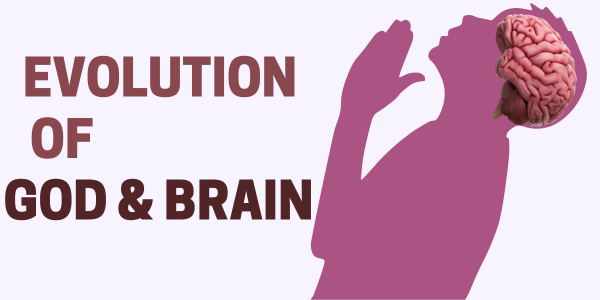The Evolution of Gods: How Human Brains Brought Divinity to Life
From the earliest flickers of self-awareness to the vast pantheons of gods worshipped today, humanity's fascination with the divine has evolved alongside our brains. It seems that as we grew smarter, we also began crafting gods, weaving them into the fabric of our existence. But how did this process unfold, and what does it reveal about our species?
Humanity hasn’t always had gods, but as our ancestors’ brains grew larger and more complex, so too did their ability to imagine and conceptualize beings beyond the physical world. Around two million years ago, Homo habilis exhibited a notable increase in brain size, gaining the capacity for problem-solving and rudimentary tool use. However, according to British psychologist Nicholas Humphrey, their minds were like "blank slates"—clever, but lacking self-awareness.
The real spark came approximately 200,000 years later, when Homo erectus tamed fire. Fire not only cooked food, enhancing brain health with better nutrition, but also fostered communal living and storytelling. As these early humans gazed into the flames, they may have begun to ponder forces greater than themselves.
By 200,000 years ago, archaic Homo sapiens, including Neanderthals, had developed larger brains with expanded parietal lobes. These lobes integrate sensory, visual, and auditory information, laying the foundation for what psychologists call the "theory of mind"—the ability to attribute thoughts, intentions, and emotions to others. Jesse Bering, a psychologist, hypothesized that gods were born out of this cognitive leap. With the emergence of language, possibly driven by a mutation in the FOXP2 gene, humans could now articulate their thoughts about unseen entities. Gods, for the first time, could speak, listen, and even read minds.
Around 100,000 years ago, humans gained introspection, allowing them to reflect on their thoughts and those of others. This is evidenced by the discovery of decorative necklaces and stained shells, signaling a desire to impress others—perhaps even the gods they imagined watching over them.
By 40,000 years ago, humans achieved another leap in cognition: the ability to think across time. With autobiographical memory, they could reflect on the past and imagine the future. Burial practices from this period reveal that humans understood death as the end of existence and began to contemplate alternatives, such as an afterlife. Looking to the heavens, they imagined their ancestors and gods among the stars, granting them immortality.
The Agricultural Revolution, around 12,000 years ago, brought profound changes. Settling into villages, humans buried their dead near their homes, nurturing ancestor worship. Over time, powerful ancestors were deified, becoming gods who protected the living and influenced the natural world. Studies of hunter-gatherer societies suggest that belief in an afterlife preceded ancestor worship, eventually culminating in a pantheon of gods.
By 6,500 years ago, writing emerged, and the gods of ancient civilizations became well-documented. According to the Greek philosopher Euhemeros, these gods were once human rulers, their legacies immortalized through deification. The Egyptians, for instance, worshipped over 2,000 gods, while the Maori revered around 60, each uniquely tied to their culture and environment.
Advances in neuroscience and archaeology reveal that the brain’s evolution played a critical role in the invention of gods. By 10,000 to 7,000 years ago, the lateral prefrontal cortex—a region associated with planning, reasoning, and problem-solving—expanded. This allowed humans to ponder existential questions: "Where do we come from?" "What happens after death?" Their answers often pointed to gods, who offered comfort, purpose, and guidance.
The diversity of gods across cultures reflects our shared quest for meaning and the unique environments that shaped us. From the sun gods of ancient Egypt to the intricate pantheons of Hinduism, gods have served as mirrors of human concerns, fears, and aspirations.
The invention of gods is not just a testament to our growing intelligence but also to our capacity for storytelling and communal bonding. These divine entities united tribes, explained natural phenomena, and provided hope in times of despair. Today, while some gods remain central to religious practices, others rest as relics of history, preserved in museums.
Humanity’s journey from clever primates to creators of gods underscores the profound relationship between brain evolution and culture. As our cognitive abilities expanded, so did our capacity to create and believe in forces greater than ourselves. Whether alive in temples or memorialized in history books, gods remain an enduring legacy of the human mind's power to imagine and transcend.
So, the next time you marvel at the stars or ponder the mysteries of life, remember: it is the very evolution of your brain that allows you to do so—and perhaps even to glimpse the divine.
These references provide a deeper dive into the interconnected evolution of human cognition and religious beliefs.

Vedemy






Leave a Comment